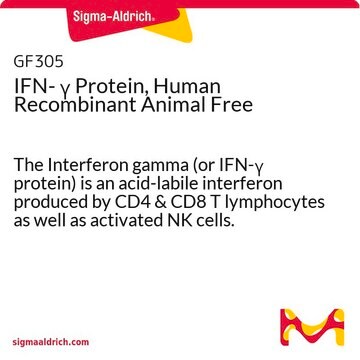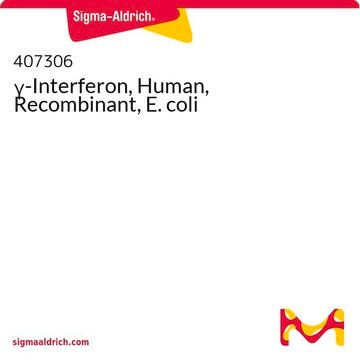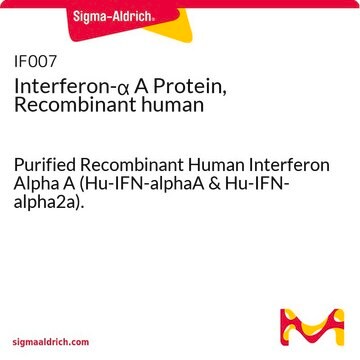IF002
Interferon-γ Protein, Recombinant human
The Interferon-g protein (or IFN-gamma protein) is a lymphoid factor which possesses potent anti-viral activity.
Synonym(s):
Human Interferon, Human Interferon-γ, Recombinant Interferon-γ
About This Item
Recommended Products
biological source
human
Quality Level
Assay
>98% (SDS-PAGE and HPLC)
specific activity
≥2 x 10(E7) U/mg
manufacturer/tradename
Chemicon®
technique(s)
cell culture | mammalian: suitable
impurities
<0.1 ng/μg endotoxin (of IFN-gamma; 1EU/μg)
input
sample type hematopoietic stem cell(s)
sample type mesenchymal stem cell(s)
NCBI accession no.
UniProt accession no.
shipped in
dry ice
Gene Information
human ... IFNG(3458)
Related Categories
General description
Application
Linkage
Physical form
Storage and Stability
Analysis Note
Legal Information
Storage Class Code
11 - Combustible Solids
WGK
WGK 3
Certificates of Analysis (COA)
Search for Certificates of Analysis (COA) by entering the products Lot/Batch Number. Lot and Batch Numbers can be found on a product’s label following the words ‘Lot’ or ‘Batch’.
Already Own This Product?
Find documentation for the products that you have recently purchased in the Document Library.
Our team of scientists has experience in all areas of research including Life Science, Material Science, Chemical Synthesis, Chromatography, Analytical and many others.
Contact Technical Service






